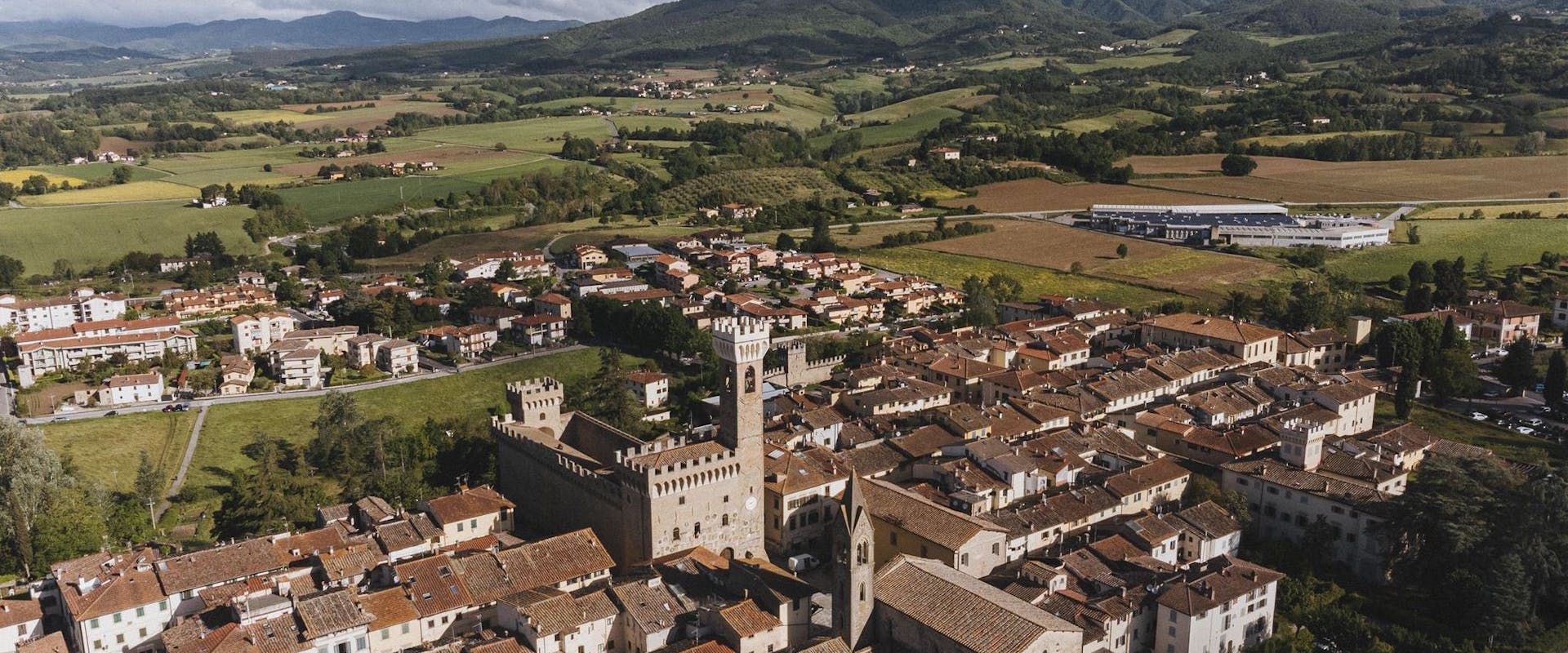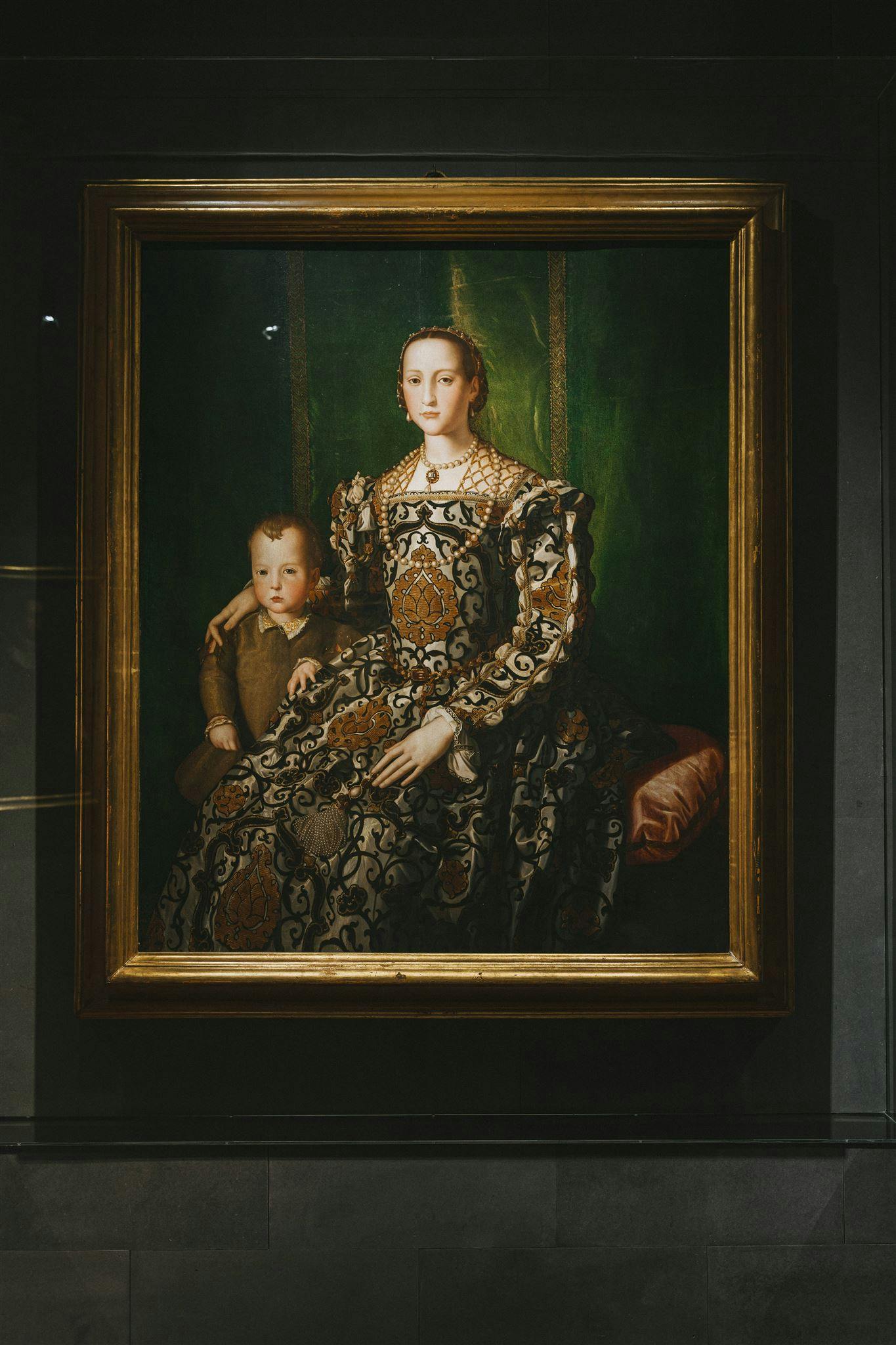The Medici: Mugello Folk. Family portraits from the Gallerie degli Uffizi
From 19 May to 5 November, four works from the Uffizi Galleries bring back the Grand Dukes in the country and towns of the Mugello, the family’s legendary homeland.
Lands of the Uffizi brings the Medici family portraits to the noble halls of Scarperia’s Palazzo dei Vicari to evoke the lengthy and widespread presence of the Medici in the country and towns of the Mugello, the family’s legendary homeland. From 19 May to 5 November the Museo dei Ferri Taglienti in Scarperia and San Piero will be hosting "The Medici: Mugello Folk. Family portraits from the Gallerie degli Uffizi", an exhibition devised and produced by the Fondazione CR Firenze and the Gallerie degli Uffizi in the context of their respective Piccoli Grandi Musei and Uffizi Diffusi schemes.
The portraits of the Dukes and their consorts in this exhibition are by leading Florentine artists who populated the art scene in the city in the 1530s and ‘40s, following in the footsteps of such great early 16th century masters as Fra Bartolomeo, Raphael, Michelangelo and Andrea del Sarto.
Ridolfo del Ghirlandaio painted the portrait of Cosimo, the son of Giovanni dalle Bande Nere and Maria Salviati, who, though barely older than 10, is already proudly aware of his rank, underscored by his rich attire and the presence of his coat-of-arms with the inscription “cosmo med” upper right.
The portrait of the Duchess Eleonora, Cosimo’s wife and the daughter of Don Pedro de Toledo, the Viceroy of Naples, was painted by Lorenzo Sciorina, a pupil of Bronzino, who revisited his master’s famous portrait – it, too, in the Uffizi – with a number of variations and a somewhat more academic tone. The Duchess wears a magnificent brocade gown with gold thread and the pearls she so loved, but unlike in Bronzino’s portrait where she is shown with her second son Giovanni, here she is in the company of Garcia, her eighth son who died of malaria while still very young.
The portraits of Francesco I, here aged about 30, and of Bianca Cappello, his second wife, were also intended as official likenesses. Painted by artists from the circle of Santi di Tito and Alessandro Allori, the two pictures are remarkable both for their descriptive intent and treatment of the sitters’ contained yet intense expressions, and for their attention to detail in the setting, fabrics and ornaments, reflecting the trend in painting in Florence in the final years of the 16th century. Bianca had purchased a number of estates in the Scarperia area, and tradition has it that she had a special devotion to the miraculous image of the Virgin venerated in the church of Santa Maria a Olmi, whence the portrait comes. Originally frescoed in the rectory, it was detached in 1871 and taken to the gallerie fiorentine.
Stanislao Pointeau. A Tuscan "macchiaiolo"of French descent. An exhibition dedicated to Prof. Carlo Del Bravo
Exhibitions
The Medici: Mugello Folk. Family portraits from the Gallerie degli Uffizi
From 19 May to 5 November, four works from the Uffizi Galleries bring back the Grand Dukes in the country and towns of the Mugello, the family’s legendary homeland.
Exhibitions
A bizarre and whimsical temperament. Giovanni da San Giovanni, a maverick painter at the Medici court
Giovanni da San Giovanni returns to his home town with an exhibition in the "Lands of the Uffizi" series
Exhibitions
The Ceramics of Montelupo and the Uffizi. A gallery of comparisons
"Lands of the Uffizi" comes to Montelupo for the first time
Exhibitions
Embattled thinkers. Fame and oblivion of two men of letters, from the Battle of Anghiari to the siege of Famagusta
The Museo della Battaglia e di Anghiari is to host a new exhibition in the Lands of the Uffizi
Exhibitions
The Fabulous '60s in the Maremma. The mark of Ico Parisi
The splendour of the fashionable clothes of the Museum of Fashion and Costume of Pitti Palace 'parades' in Grosseto to recreate the dynamism and effervescence of the society of Southern Tuscany in the post-War period.
Exhibitions
The paintings of Jacopo Vignali, from the Gallerie degli Uffizi to San Casciano
In memory of Carlo Del Bravo
Exhibitions
Masaccio and Fra Angelico. A dialogue on truth in painting
Masaccio returns to his birthplace, Castel San Giovanni, in a dialogue with Fra Angelico
Exhibitions
La predella degli Uffizi salvata al Castello di Montegufoni
The return to Montespertoli of the Gallerie degli Uffizi predella
Exhibitions
A Renaissance Masterpiece, from France to Bosco ai Frati: A Triptych by Nicolas Froment.
15th century painter Nicolas Froment’s masterpiece returns after almost 200 years to the convent that was its home for centuries
Exhibitions
Nel segno della vita. Donne e Madonne al tempo dell' attesa
An exhibition devoted to the portrayal of the motherhood
Exhibitions
Masaccio and Renaissance masters compared to celebrate 600 years of the Triptych of San Giovenale
Masaccio’s San Giovenale Triptych displayed for the very first time alongside work by the great painters of his day
Exhibitions
Pietro Benvenuti in the Age of Canova. Paintings and drawings from public and private collections
The first “Lands of the Uffizi” exhibition to be held in Arezzo explores the work of painter Pietro Benvenuti in the age of Canova
Exhibitions
The Warrior Pope Giuliano Della Rovere and Anghiari’s Soldiers of Fortune
The link between the Warrior Pope Giuliano Della Rovere and Anghiari’s Soldiers of Fortune
Exhibitions
Giottesque Painters in the Valdelsa
Two versions of the Madonna and Child juxtaposed for visitors to discover Lippo di Benivieni and the followers of Giotto in the Valdelsa
Exhibitions
"The Final Seal". The Stigmata of St. Francis at La Verna from the collections of the Gallerie degli Uffizi
The Pinacoteca Comunale di Castiglion Fiorentino and the Gallerie degli Uffizi trade two masterpieces
Exhibitions
The Civilisation of Arms and the Courts of the Renaissance
An exhibition in Anghiari telling the story of the Renaissance courts and of the men who peopled them, amid war and culture.
Exhibitions
In the Name of Dante. The Casentino in the Divine Comedy
Dante returns to the castle of Poppi, where the Casentino inspired the Divine Comedy
Exhibitions
Dante and Andrea del Castagno Return to San Godenzo
The fresco of Dante painted by Andrea del Castagno in the place where the painter was born and where the poet's exile began
Exhibitions

